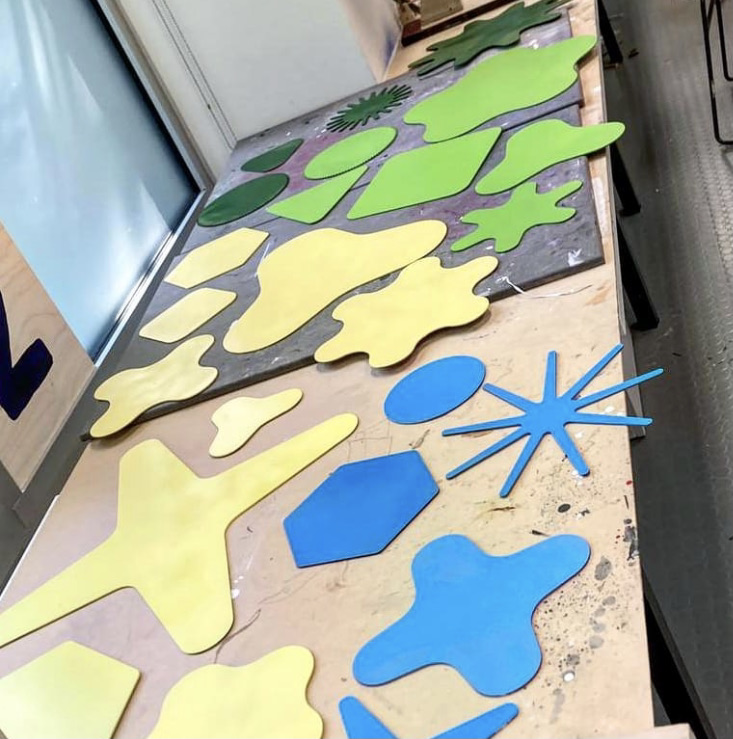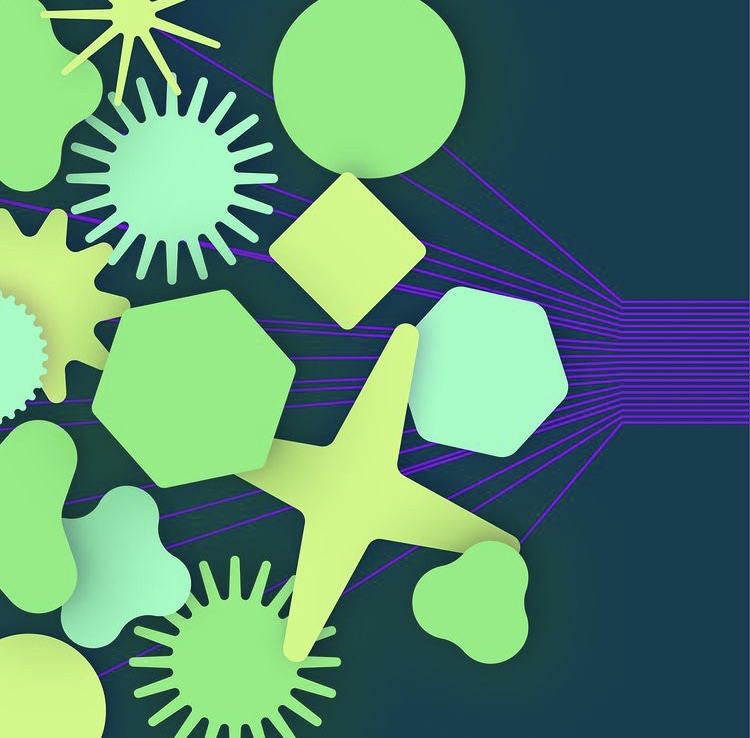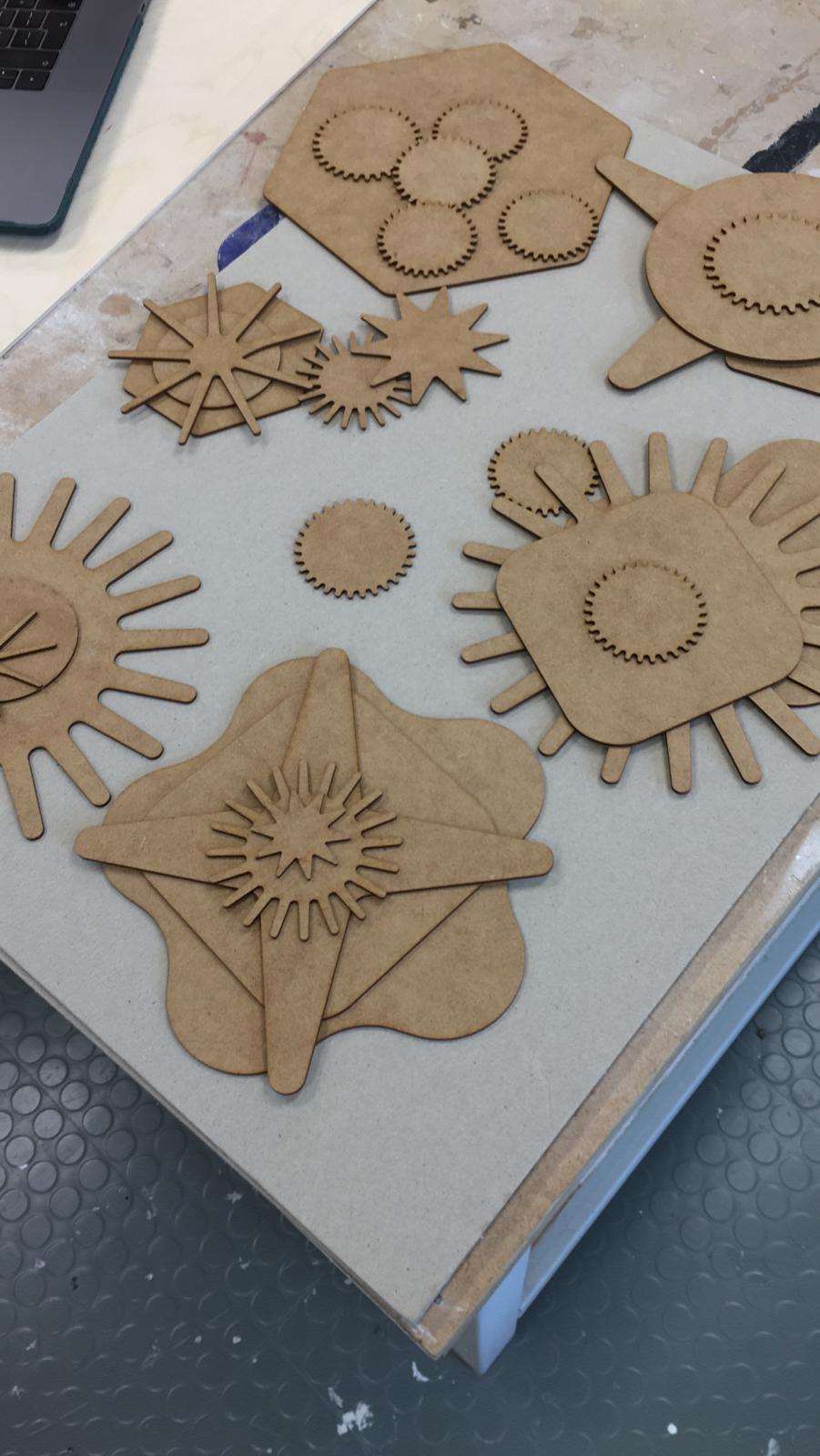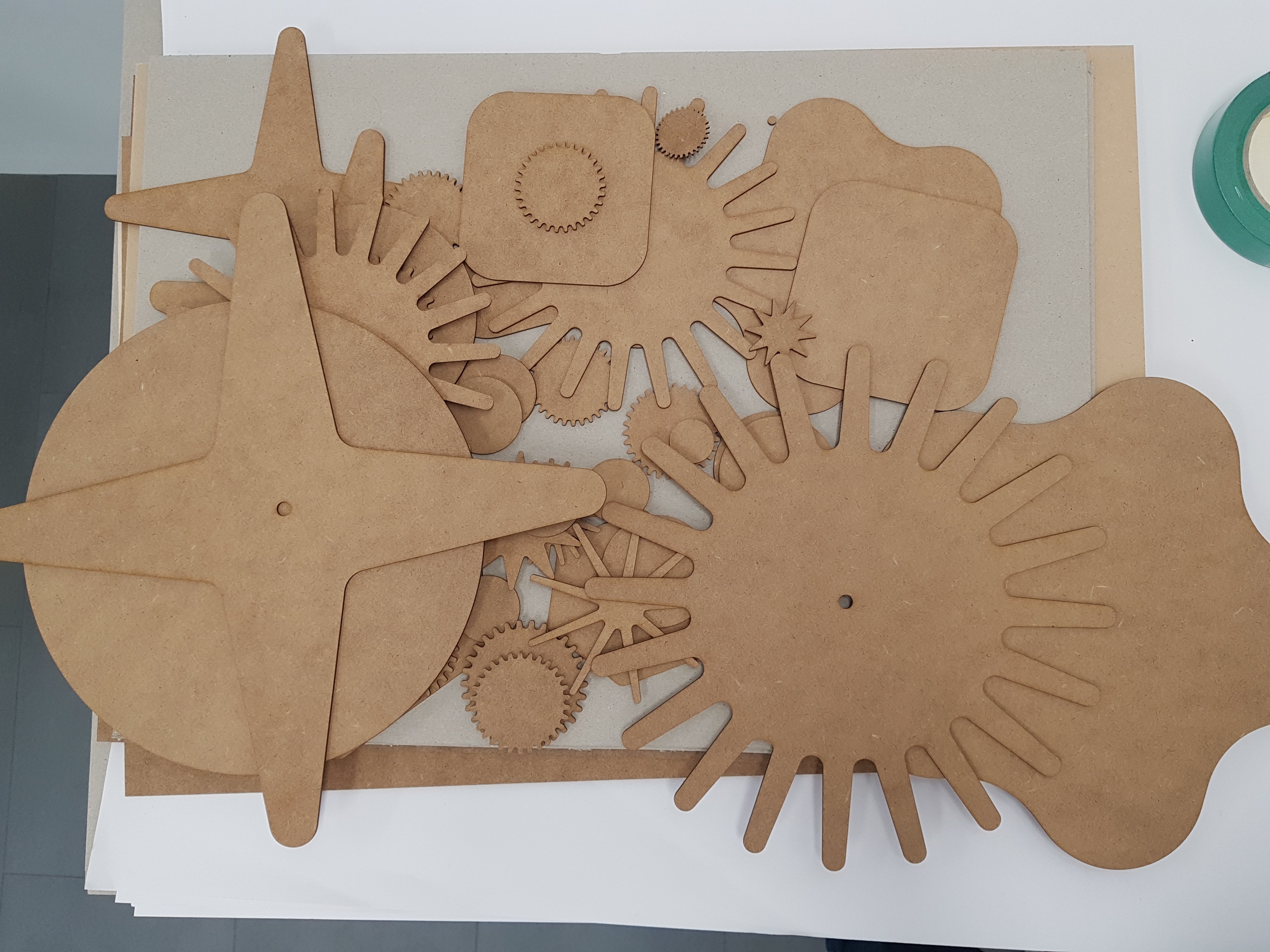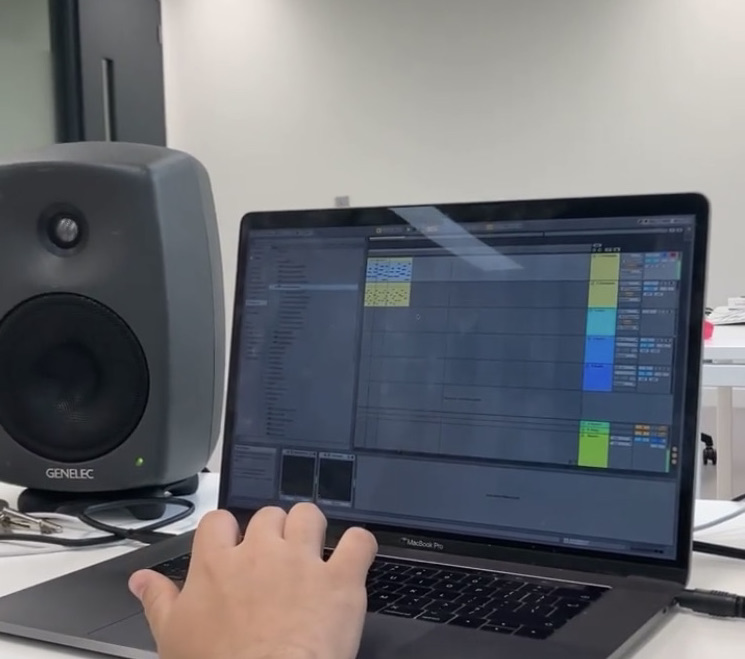Interactive Data Collecting Machines
2018- Present
Turning surveys into experiences to provide engaging means for children to share their opinions.
The UN Rights of the Child (1989) stipulates that children must be given a voice in issues that affect them. Throughout my research and design work for/with children I have always sought to find better ways to include their voices and ideas. I have written a lot about using art and design-based methods for including children in qualitative research, but what about in quantitive research?
In my role as a Senior Tutor in Information Experience Design at the Royal College of Art, MA students were taught how to bring research together with art and design practices, to create experiences for a wide range of audiences. This got me thinking about how a good audience experience should not only be the end point of research during dissemination, but could also be incorporated into finding engaging and interactive methods for data collection. This seems to be particularly relevant to traditional quantitive research with children who are unlikely to engage with a questionnaire in a meaningful way.
The following are some examples of MA student work exploring how this might work in relation to a range of scenarios. Scroll all the way through to see how the work has progressed with time.
Tunin’ (2018)
by Yaprak Goker, Lucy Anderson, Evan Reinhound and Noura Andrea NassarTunin’ was designed to gather responses from child-visitors to the 2018 Digital Playground shown at the Millennium Gallery, Sheffield. As part of the their commitment to the funders, the exhibition organisers, had committed to undertaking a questionnaire to find out if children enjoyed their time at the play exhibition, and what their favourite exhibits were etc. I bridged the team at the Playground and the IED students to produce new and interactive ways to gather such information. I held a belief that the data collection mechanism could have the potential to be as engaging as other exhibits in the show.
The four producers for the piece described their design:
We wanted to move away from traditional paper surveys, and designed Tunin’ to engage children through sight, touch and sound. Interaction with the machine is fun; questions are answered by picking up and placing a circular disk directly into an answer circle. Tunin’ is also responsive, enabling participants to listen to their opinions after completing the survey.”
 Image: Tunin’ by Yaprak Goker, Lucy Anderson, Evan Reinhound and Noura Andrea Nassar
Image: Tunin’ by Yaprak Goker, Lucy Anderson, Evan Reinhound and Noura Andrea NassarIn order to tie in with the overarching theme of the exhibition that year on ‘sound’, the Information Experience Design students created a design where each question was assigned a musical instrument disk. The disks could then be placed in a circular slot relating to how children wanted to answer the question: ‘yes’, ‘no’ or maybe”.
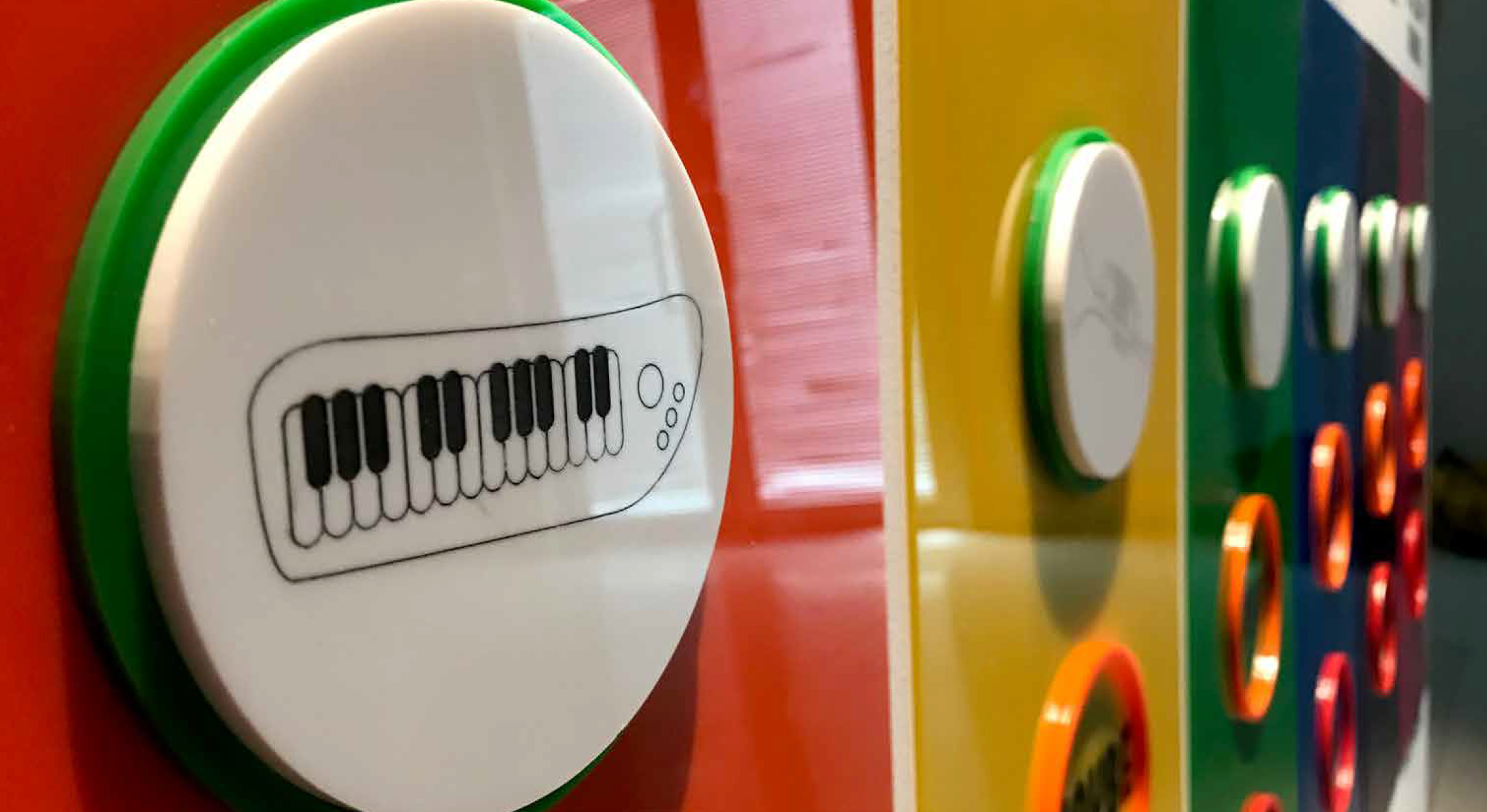 Image: close-up of Tunin’s musical disks
Image: close-up of Tunin’s musical disksOnce the survey had been answered, and all the instrument disks were in place, participants could push a button on the side of the machine which created a sonic representation of their answers. Different pitches were allocated to the placement of the instrument disks from high to low, depending on the answer chosen for each of the questions.
The producers describe how it was made:
Each response disk has a magnet sensor below it which is linked to an Arduino micro-controller and detects whether a participant has answered ‘yes’, ‘maybe’, or ‘no’. When the button is pressed (after all the questions have been answered and the disk placed), the Arduino is prompted to read through the sensors and find out which ones are active, playing the correct sounds, but also recording the responses (1 for ‘yes’, 2 for ‘maybe’, and 3 for ‘no’) and writing them to an SD card with a timestamp.
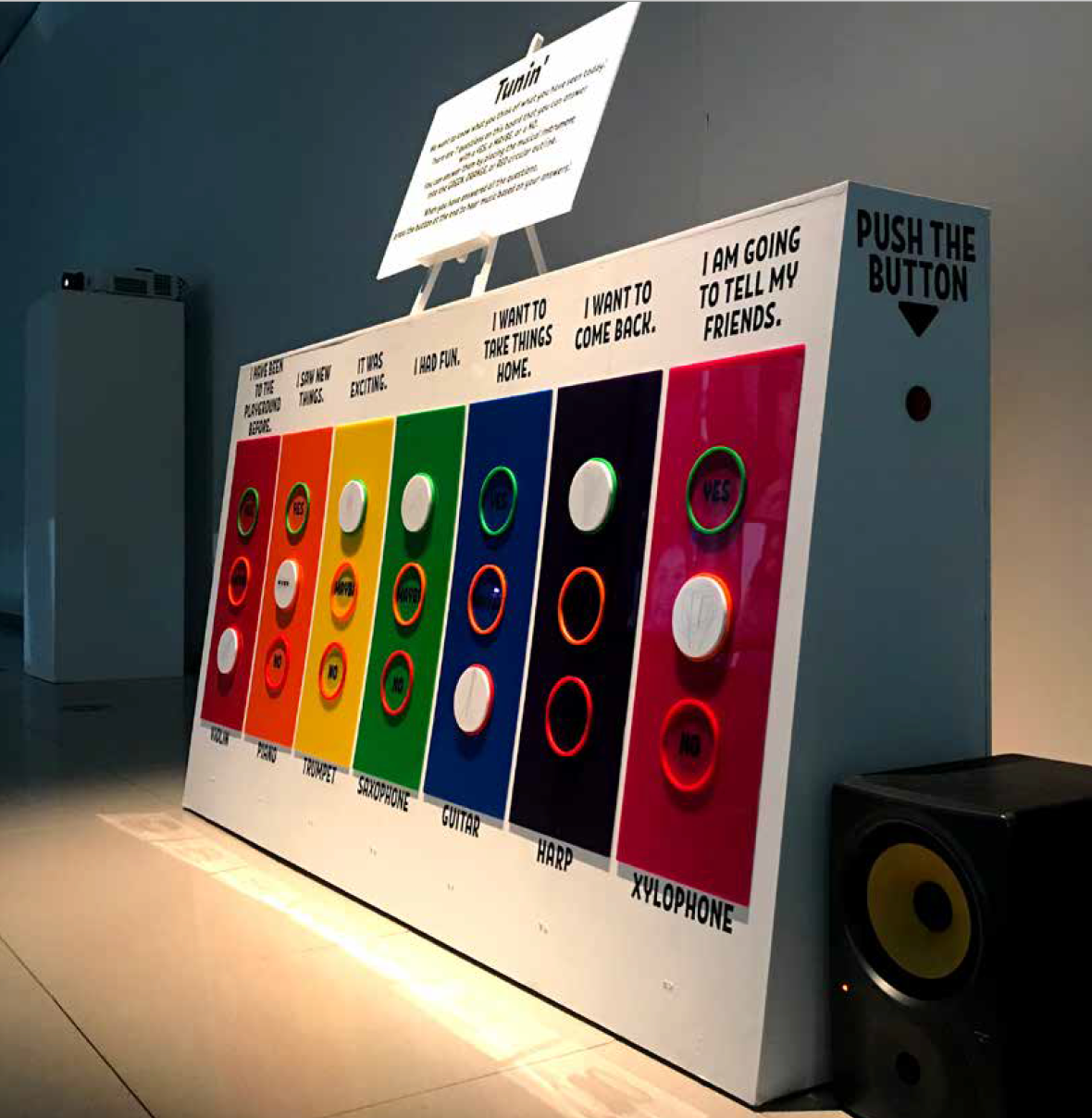
One of the key learnings from this data experience machine was that making it too interactive interfered with it’s ability to accurately record data as children played with it as a musical instrument; quickly altering their responses in order to produce new sounds. Students attempted to solve this problem by disregarding any data made in quick succession.

Sweet Dreams (2019)
by Izabela Duszenko, David Sappa and Dimitri MenexopoulosI undertook research into children’s sleep habits to inform the production of a new play called ‘Sweet Dreams’ by the Tutti Frutti theatre company. With funding from the Wellcome Trust and partners at The Sleep Charity and Sheffield Children’s NHS Foundation Trust, the intention was to produce a performance or 3–7 year olds about the benefits of sleep and the fears children may have of it.
As part of the performance, Tutti Frutti sought to collect data from the child-audiences about what they do before they go to sleep. Similar to the Tunin’ experience machine, MA Information Experience Design students Izabela Duszenko, David Sappa and Dimitri Menexopoulos were asked to produce an interactive device that could collect data from child-audiences and also connect to the overarching theme of sleep.
The idea was that the data experience machine would be used by children at the end of the performance, and so inspiration was taken from time spent at planning days, where both the script and set design were developed:
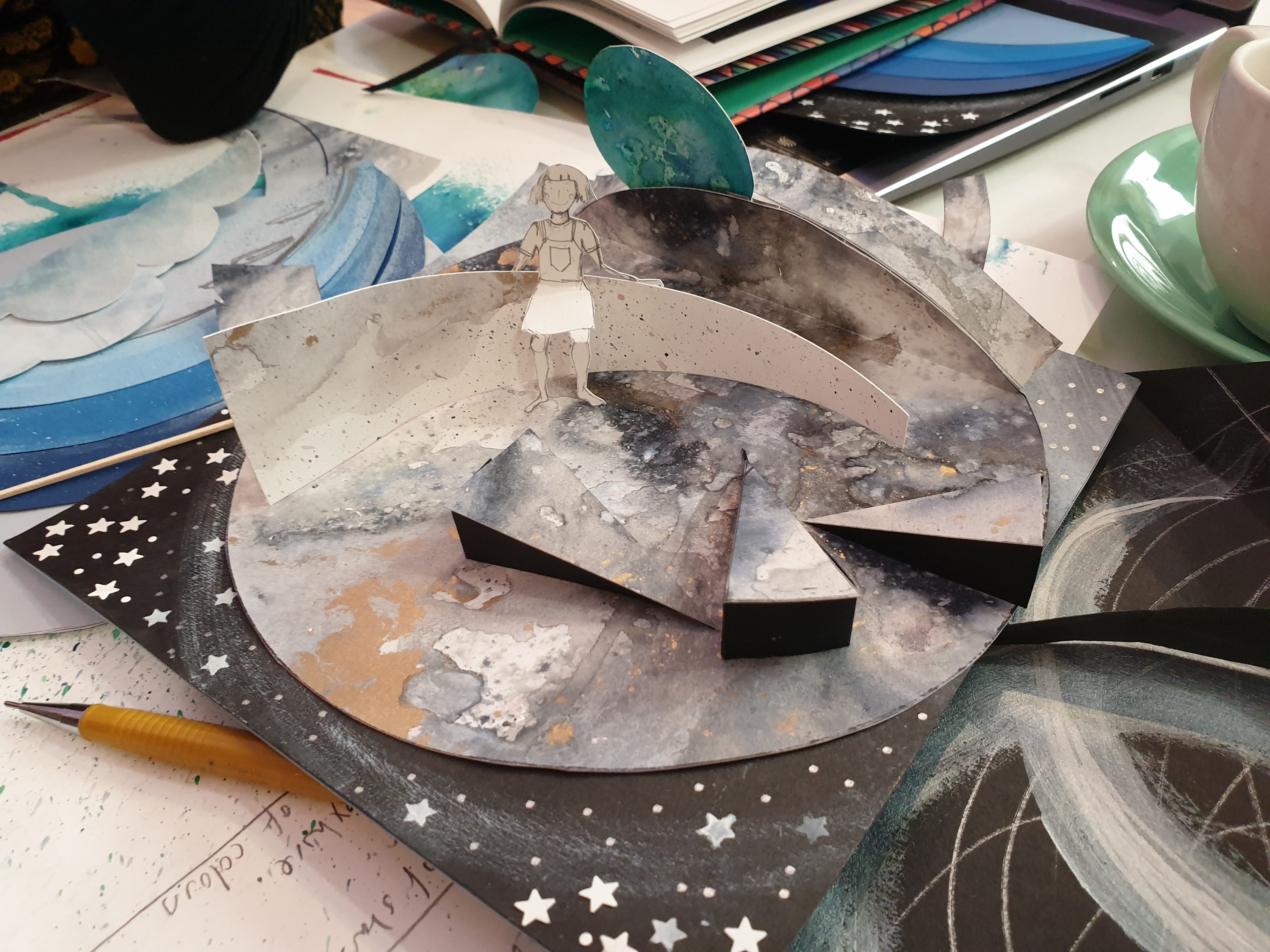
The students’ final design was based on the concept of a kaleidoscope. At the end of each performance children would choose a colourful token to represent what they do at bedtime to help them sleep well. The token could then be inserted into the kaleidoscope, allowing the audience to interact with and view the data inside through a projection of shapes.
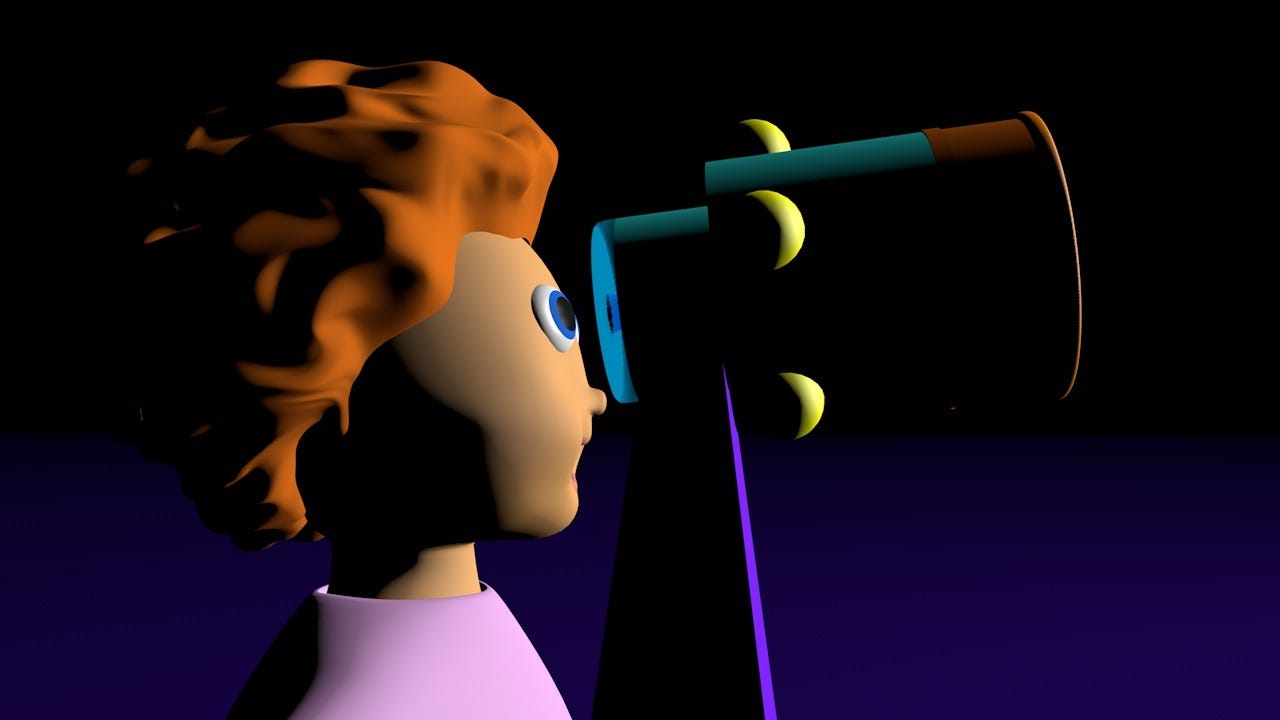

Once the performance was completed, the tokens could be removed from the kaleidoscope and counted to give a quantitive response to what children usually do to prepare for sleep. Unfortunately, this data experience machine was never completed as the physical performance was indefinitely postponed due to the COVID-19 pandemic.
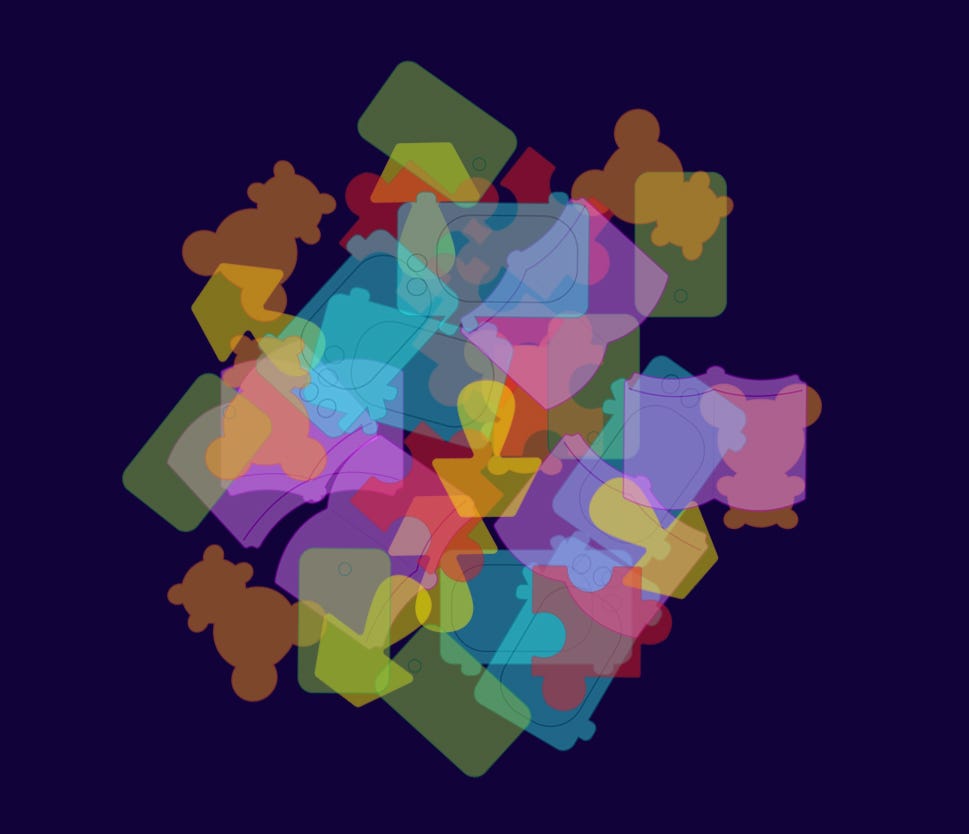


 Images: Kaleidoscope patterns by Izabela Duszenko
Images: Kaleidoscope patterns by Izabela DuszenkoInstead, the theatre performance was converted to an online radio show. As a result, the data experience machine also shifted and the outcome became an online survey in the form of a car diving game. The idea derived from Lea Berre’s driving game below but was adapted to fit with the overall them of ‘sleep’. To do so the car moved from a race track to the bedroom floor. Child-users were asked five research questions about their sleep patterns, following which they could then drive to collect one token representing a multiple choice answer. At the end of the survey, there was a free-play option where users could drive around the bedroom experiencing everyday objects from new angles.


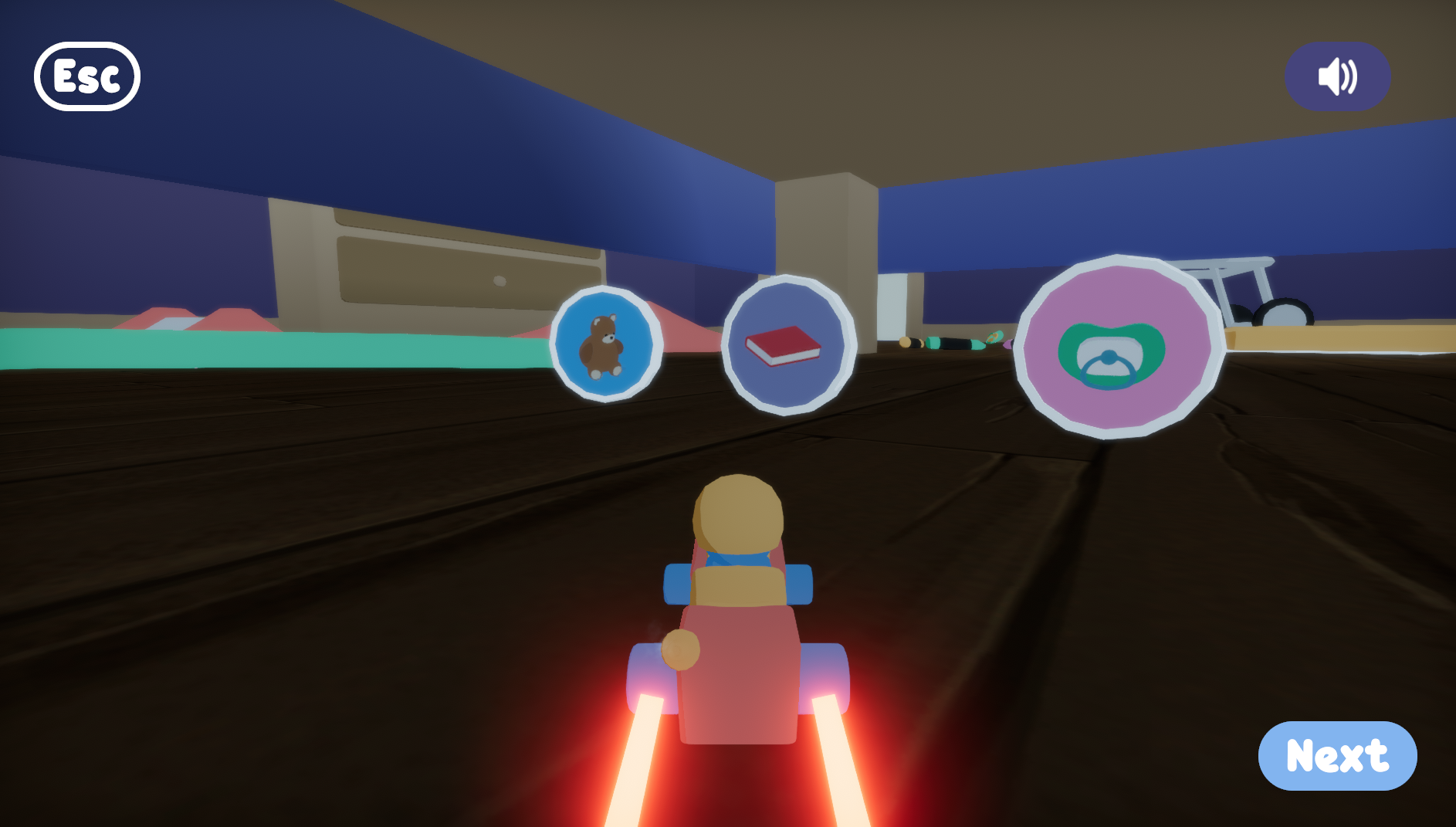

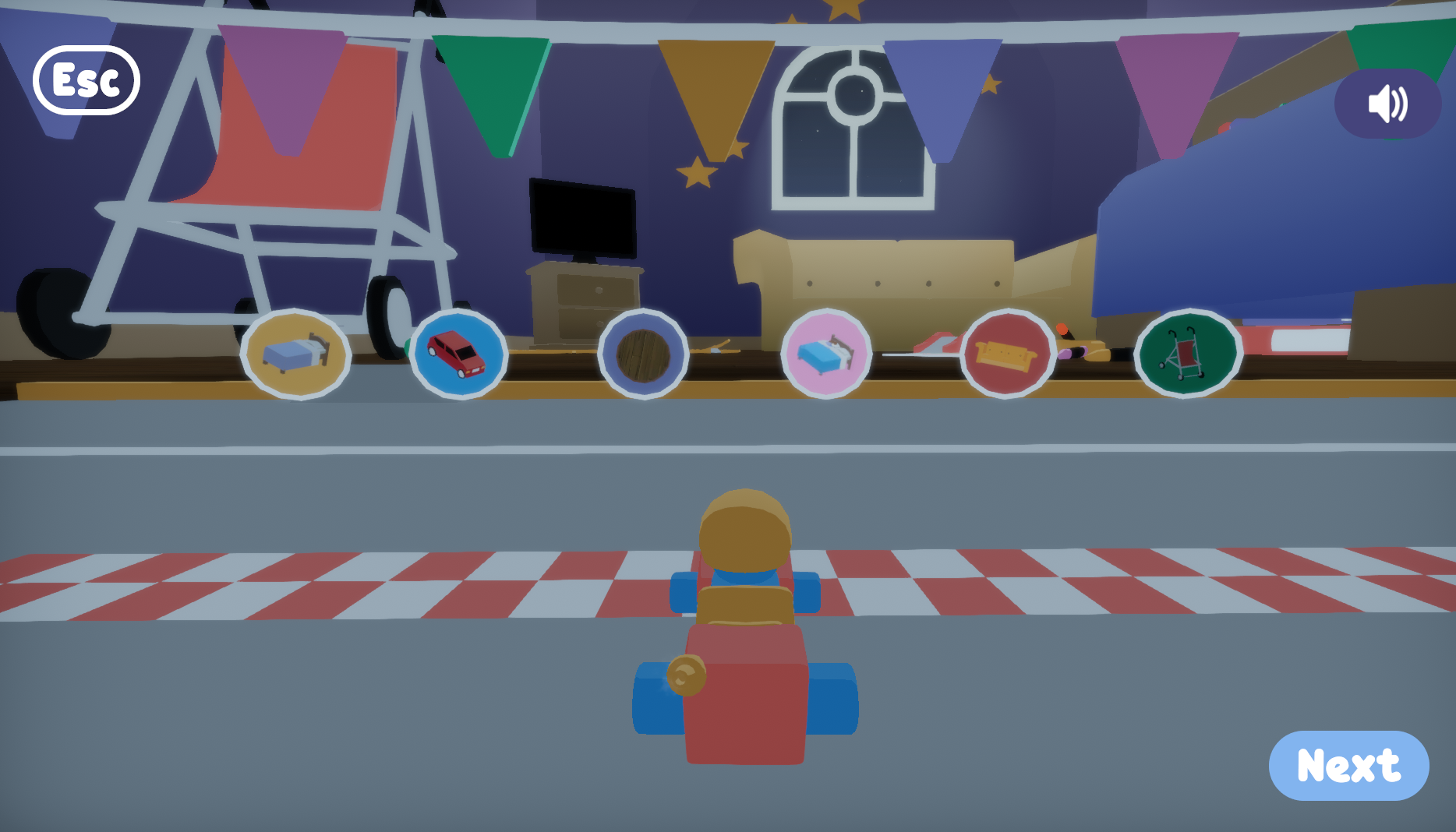

Kinetic Landscape (2021)
by Lera Kelemen, Ance Janevica, JP Guerrier, Nicolas Faris, Nirav Beni, Shangyun Wu and Susan AtwillKinetic Landscape was produced for the 2021 Digital Playground at Site Gallery in Sheffield. The aim was to make quantitative data collection with children interactive whilst also responding to the theme of the show “What if” to encourage children to see themselves as the innovators and creatives of the future.
The team of MA Information Experience Design students developed an idea that invited the children who visited the Digital Playground to choose from a series of three pedals in order to answer the survey questions. Once all questions were answered it produced sounds and movement in the installation as a response.


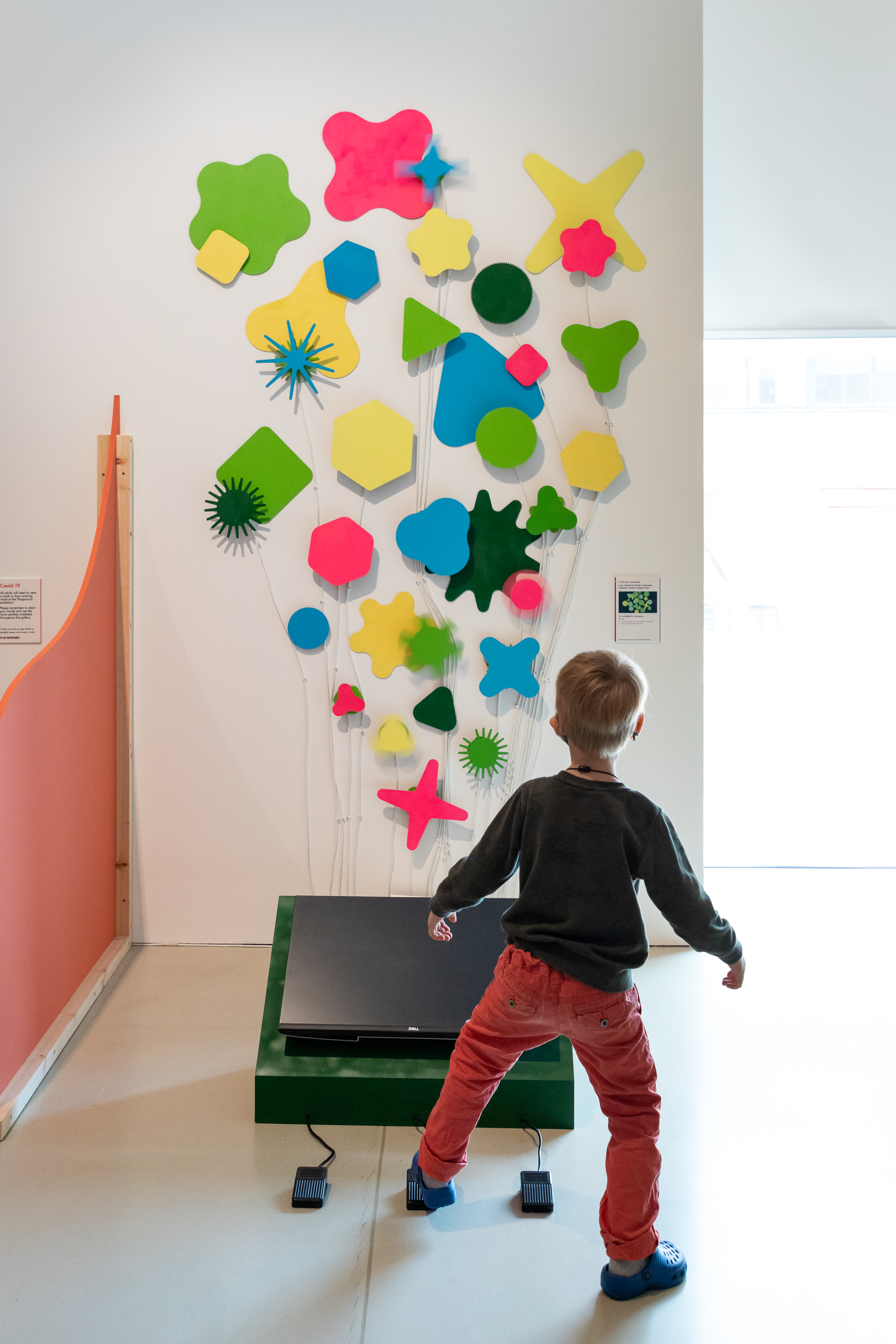

The team write:
Kinetic Landscape is a vividly colourful interactive installation. Part sculpture, and part data collection system, Kinetic Landscape is a creative concept for collecting opinions and feedback from guests at the Digital Playground. Create new worlds with your feedback! Answer questions with your feet to see and hear the landscape move around you!
Kinetic Landscape Collective are Lera Kelemen, Ance Janevica, JP Guerrier, Nicolas Faris, Nirav Beni, Shangyun Wu and Susan Atwill; a group of makers, sound designers and digital specialists from the Royal College of Art’s MA Information Experience Design course.
They have come together in a voluntary capacity for the show, with the aim of designing and creating a memorable alternative to the traditional questionnaire. Inspired by dance mats, they devised a method of collecting information through feet (no touching!), ensuring the experience is both fun, and COVID safe.

